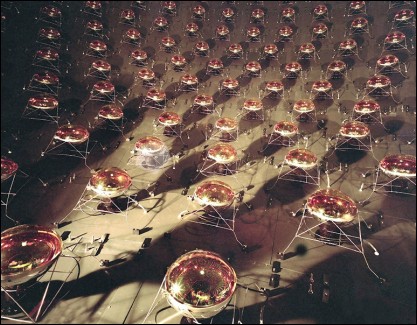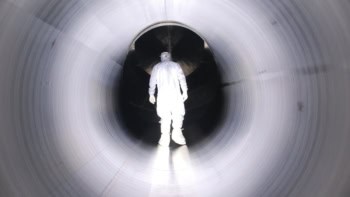Physicists working on the MiniBooNE experiment at Fermilab in the US have shown that, as thought, nature contains just three types of neutrino. This result contradicts a puzzling finding obtained by a similar experiment at the Los Alamos laboratory in 1995, which pointed to the existence of a fourth type of neutrino, and is therefore good news for the Standard Model of particle physics.

Neutrinos are elementary particles with no electric charge that barely interact with matter. According to the original Standard Model of particle physics, neutrinos come in three types or “flavours” – electron, muon and tau – all of which should have no mass. But in recent years several experiments have given clear evidence that neutrinos can change or “oscillate” from one flavour to another over long distances. This effect has led physicists to conclude that neutrinos do have mass after all, thus forcing them to make subtle modifications to the Standard Model.
However, physicists have long been puzzled by a rogue result obtained by the Liquid Scintillating Neutrino Detector (LSND) at Los Alamos in 1995, which hinted at oscillations between anti-muon neutrinos and anti-electron neutrinos. What was odd was that the large value measured for the “mass difference” – one of the six parameters that govern neutrino oscillations – was inconsistent with previous measurements. If the LSND’s claims were true, the Standard Model would need a major overhaul, possibly requiring the existence of a fourth kind of “sterile” neutrino with unusual interactions.
The MiniBooNE experiment at Fermilab, which began taking data in 2002, was designed to look for the same kind of oscillations seen with the LSND experiment but to do so with a higher degree of accuracy. It involves searching for signs of electron neutrinos in the hoards of muon neutrinos produced 500 m away by an 8-GeV beam of protons from Fermilab’s Booster accelerator. The conclusion: there is no evidence to support LSND’s claims.
David Wark of the Rutherford Appleton Laboratory in the UK told Physics Web that this is good news for the Standard Model: “It means that the picture we have of neutrino oscillations looks secure, and we can proceed without a troubled conscience to the next generation of particle physics experiments such as T2K and NOvA.” The null result also means that sterile neutrinos are unlikely to exist. “They’ve gone from ghosts that clunk in the night to ghosts that make no sound whatsoever,” Wark added.
MiniBooNE must now repeat its experiment using anti-muon neutrinos to comprehensively rule-out the LSND’s results. If this version finds oscillations, which would be unlikely, it would mean a violation of so-called charge-parity-time (CPT) symmetry and consequently Einstein’s special relativity. “The Standard Model is not quite out of the woods yet,” said Wark.



